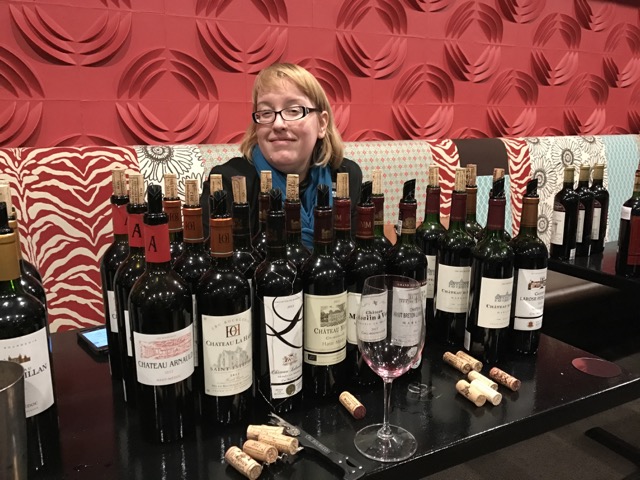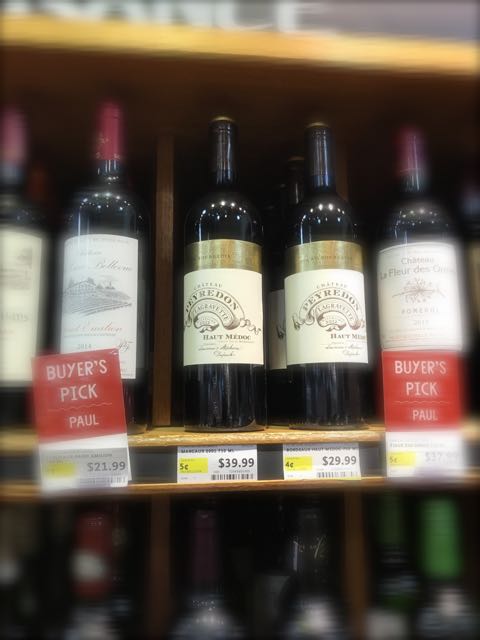Diamonds in the rough: Cru Bourgeois 2014

Heterogeneous in quality, the sprawling cru bourgeois category from Bordeaux also can mean diamonds in the rough
(This is part 2 of a two-part article on affordable Bordeaux. For part 1, click here.)
22 January 2017
By Panos Kakaviatos for wine-chronicles.com
I recently visited Washington D.C.-based fine wine importer/retailer Calvert Woodley. Owner Ed Sands said that shelf space for fine Bordeaux has shrunk significantly over the past 10 years as prices have skyrocketed upwards.
And even if many consumers have searched for alternative wines from outside Bordeaux, shelf space for value Bordeaux of quality has expanded, Sands said.
That could be because advances in better winemaking and viticulture have not only benefitted the great names like Latour, Montrose, Haut Brion, Palmer and more. Indeed, the overall quality of wine and winemaking has led to better quality as well for economically priced Bordeaux, such as the wines under the category known as cru bourgeois.
The cru bourgeois category in Bordeaux as it stands today counts some 250 estates. And many people have never heard of most of them. Furthermore, more famous brands – such as Poujeaux, Les Ormes de Pez, Haut Marbuzet, Chasse Spleen and others – disengaged from an earlier official “cru bourgeois” appellation definition, when a 2003 classification that had rated such great brands as “exceptional” was (rather stupidly) annulled at least in part because of typical Bordeaux infighting.
Why? Here a bit of history…
The Médoc region has been famous for centuries, and has always commanded the highest prices. Perhaps in response to financial hardship during the Great Depression, a classification of the lower-priced crus bourgeois of the Médoc was drawn up by the Bordeaux Chamber of Commerce and Chamber of Agriculture in 1932, naming 444 properties, but that local classification was never officially ratified by the national Ministry of Agriculture.

Sommelier and wine educator Maria Denton, ahead of a tasting dinner with cru bourgeois wines at Ripple Restaurant in Washington D.C. in January 2017
Over time, however, the popularity and reputation of the cru bourgeois category grew, driven by some top estates. A stricter classification was created in 2003. Of 490 châteaux that submitted to the new classification, only 247 were included. Nine were named cru bourgeois exceptionnel, followed by 87 estates dubbed cru bourgeois supérieur and the other 151 given the standard cru bourgeois moniker.
Unfortunately, this very fine classification was annulled in court after many of the châteaux that had been left out successfully contested it. As a result, Bordeaux’s Alliance des Crus Bourgeois du Médoc reintroduced the term cru bourgeois as a mark of quality rather than as a classification. While the term cru bourgeois is still used, it no longer includes an internal ranking—neither exceptionnel nor supérieur—as the 2003 classification did. Moreover, some estates that could fall into the cru bourgeois category chose not to be part of the Alliance.
Finding good stuff in 2014 – just recently bottled
So where are we today?
Over the last 10+ years, the cru bourgeois appellation includes many “no- names” that tend to cost between $15 and $30 per bottle in the US market. You can find some of these wines for well under 10 euros in France. They are not all good.
My personal opinion? The Alliance of Cru Bourgeois has too many members – and the mass is a bit, well, imposing. But the good news is that one can find many diamonds in the rough, and the pricing is more than reasonable.
And, as I wrote in Part 1 of this entry on bargain Bordeaux, 2014 is a rather underrated vintage, which makes it attractive for savvy wine consumers.
For example, when I stopped by the excellent organic food market Whole Foods in Clarendon (Arlington), Virginia the other day, it was no surprise to see a fine selection of wines from all over the world, as well as American wines from Oregon, California and from my home state of Virginia. And a few examples of cru bourgeois, like Château Peyredon Lagravette 2014, which fetches $29.99 at Whole Foods.
I found other vintages of this wine for half that price in the U.S. on wine-searcher.com, as Whole Foods is an upscale store, but I am pleased to see that such lesser known cru bourgeois are finding their places in such a highly competitive wine market as the Washington D.C. area. Importers are increasingly seeking out fine wines from the cru bourgeois category because they are very good wines and command reasonable prices.
In a visit to Bordeaux late last year, for example, I tried a sampling of wines from the 2014 vintage, as you can see in the above video. While not all I had tried were to my liking, many proved good to very good and provide bang for your wine buck. Some of the best included a smooth and nuanced Château Bellevue de Tayac (AOC Margaux) and an excellent Château Serilhan (AOC St. Estephe).
Also a very good example of a wine from the northern Médoc that performed better in 2014 than it did in 2015: Château Fontis (AOC Médoc). Based in Ordonnac – where 2015 saw more rain at the wrong time – this 2014 is a better wine and one of the best Médoc AOC wines from this tasting, as it conveyed a suave and smooth aspect for its tannins, and an orange rind like freshness combined with the expected red and black fruits expected from the Cabernet and Merlot, evenly mixed in this wine that clocks in at 13% alcohol.
For my full tasting notes, visit this page on Cellar Tracker.
For the past few years, I have been organizing tastings of the cru bourgeois wines: most recently a dinner tasting at the excellent Ripple Restaurant in Washington D.C. And I was not that surprised that blogger Isaac James Baker (Reading, Writing and Wine) rated some of the cru bourgeois from that tasting dinner quite highly (a few 90+ scores). The dinner tasting featured various vintages (including 2014) from some 16 producers.
 Wine Chronicles
Wine Chronicles


Share This